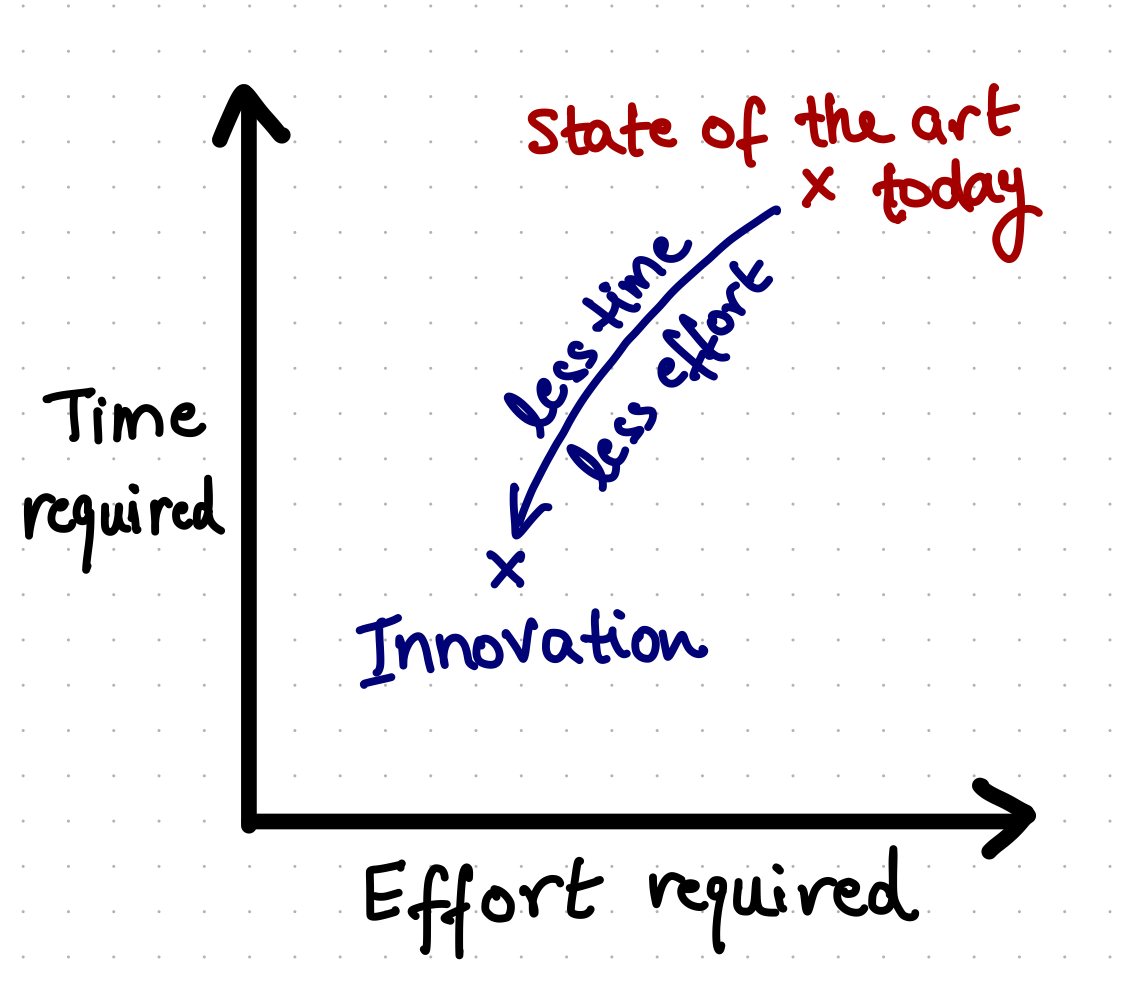Innovation: It’s About Your Effort and Time, Not Your Hair on Fire
A few months ago, I was talking about an exciting new product with a friend. As I described the efficiencies this product could offer, my friend remarked: “Sure, it saves some time. But is it addressing a ‘hair on fire’ problem?”
The best explanation I could find for a “hair on fire” problem is by Michael Seibel:
If your friend was standing next to you and their hair was on fire, that fire would be the only thing they really cared about in this world. It wouldn’t matter if they were hungry, just suffered a bad breakup, or were running late to a meeting—they’d prioritize putting the fire out.
And it caught me off guard. Here I was, showing them a product that could save both time and effort, which to me, is the essence of innovation. But they didn’t see it that way. In their view, the product wasn’t targeting a well-recognized, urgent problem. It made me pause and reflect.
Every innovation that I know of has been an optimization, not a solution to an established problem. Cars were an optimization over horses — people were perfectly fine buying and using horses. And honestly, horses can go places cars just cannot. And yet, our highways are filled with cars, not horses.
Take a modern example. Ask any random car driver if they are dissatisfied with driving their vehicle. Most will probably say no. But introduce the convenience of self-driving capabilities to that person, give them some time to get used to it, and suddenly, driving manually seems like a significant “hair on fire” issue (ask any Tesla driver to get that perspective).
In reality, the “hair on fire” problems are often identified in hindsight, not predicted. Once people got accustomed to the comfort and speed of cars, the lack of one became their “hair on fire” problem. A horse rider in the pre-automobile era wouldn’t have realized that.
In short: It’s not about your hair, it’s about your time and effort. Anything which saves you time and effort is innovation. When an invention significantly reduces the time and effort for a large number of people, it becomes the new norm.

Now, apply that to startups and some innovations come to mind:
- Google improved the time-effort curve compared to libraries.
- Gmail improved the time-effort curve over Yahoo Mail.
- Slack improved the time-effort curve over IRC.
- Stripe improved the time-effort curve over payment integration.
- ChatGPT improved the time-effort curve over Google searches.
Take ChatGPT: When it was launched, it didn’t address an immediate “hair on fire” problem. People had been using Google search for two decades and were content. Yet, with its ability to provide more conversational, accurate, and customized responses, ChatGPT proved there was a better way, saving people considerable time and effort compared to doing searches over Google and looking for information on websites.
So, stop thinking whether something is solving a hair on fire problem. If you ask ten people about their most urgent problem, it’s unlikely to be a lack of a new product. They’re generally satisfied with their existing solutions, simply because that’s the best they know.
Instead, introduce them to the new product and ask if it would save them time and effort. This simple test is easy to try, even with a few people and a beta product. And you’d begin to understand the potential impact it could have. It could be the next innovative product that takes the market by storm and becomes the new norm.